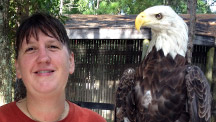
I found a few banded or marked birds last month. I always find it fun to learn about these specially marked birds, their journeys and life histories. It’s also interesting to learn how scientists are using the data in their studies.
Red Knots on January 5th
On January 5th I walked along the beach at Ponce Inlet for a while during Arthur’s weekly volunteer shift at the Marine Science Center. During my walk I found four lime-green flagged Red Knots. I reported all of these to http://www.bandedbirds.org. When flagged birds are in this database, you can see the reported resighting data immediately, which is neat. Here are the birds I found at Ponce Inlet on January 5th:
Red Knot T2T was first captured and banded on May 16, 2008. That means it was at least six and a half years old when I found it! It was banded in New Jersey and subsequently resighted many times, in New Jersey, South Carolina, and Florida.
Red Knot 2E7 was first captured and banded on April 1, 2014, in South Carolina. The bird was reported in Ontario in July of last year before my sighting at Ponce Inlet.

Red Knot 9PU was first captured and banded on May 14, 2010 in New Jersey. It has since been resighted in New Jersey, Georgia, Delaware, South Carolina, and Florida.
Red Knot 2YJ was first captured and banded on May 16, 2010, just two days after 9PU, at the same location in New Jersey.
Since these birds were all foraging together in a larger flock, I was curious if they have been reported together elsewhere. On November 10, 2011, both 9PU and 2YJ were seen at Wolf Island National Wildlife Refuge in Georgia. On the same day, T2T was still in New Jersey. The following spring, T2T was in South Carolina on April 20, while 2YJ was still down in Florida. On February 14, 2014, 2YJ and 9PU were both reported in Ponce Inlet. There are a few more instances two or more of these birds being reported together. That’s pretty neat!
Wing-tagged Black Vulture at MINWR
On January 10th my parents joined my husband and me for an afternoon at Merritt Island National Wildlife Refuge. We found a wing-tagged Black Vulture. Here’s a terrible photo.
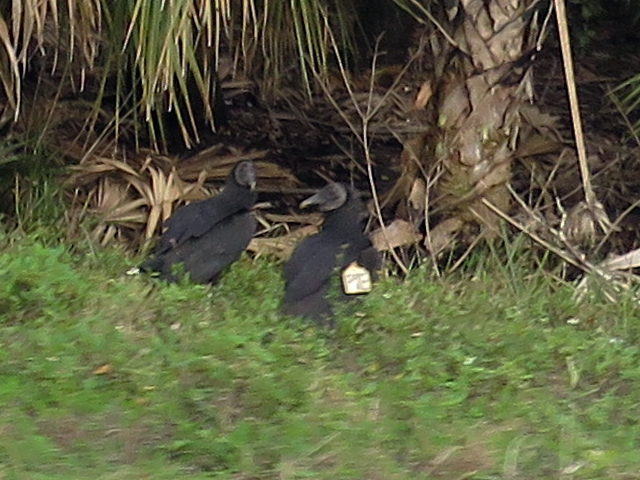
The wing tag reds PXE. The bird was located along Kennedy Parkway close to Wilson’s Corner, loafing with a group of about 12 other vultures. With a quick Google search I found out about an ongoing study of vultures by the NASA Environmental Management Branch. I sent in the information and was thanked for doing so; unfortunately I didn’t learn anything more about this wing-tagged bird but presumably the birds in the study are year-round residents of Merritt Island.
Piping Plovers and more Red Knots on January 19th
On January 19 I again walked the beach at Ponce Inlet while Arthur was volunteering. I found a few more flagged Red Knots and three color banded Piping Plovers.
I reported the Piping Plovers, but I haven’t heard anything back yet.
UPDATE 2/6/15: Luck would have it that just days after I posted this, I heard back from the Great Lakes Piping Plover Conservation Team about all three of these birds. Updates in red:
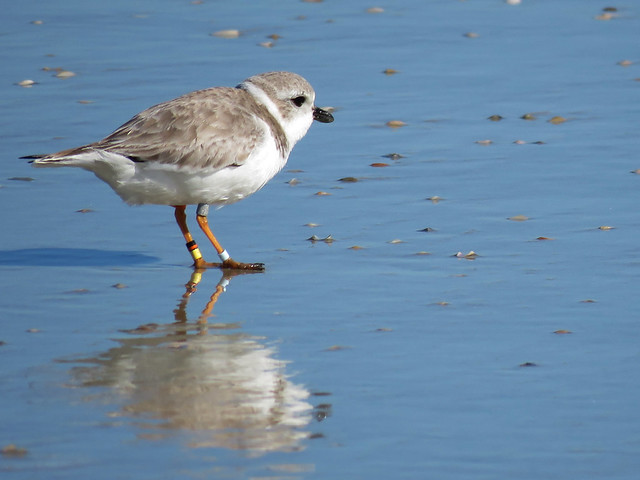
This bird “was captive-reared after his nest washed out in a big wave at Sleeping Bear Dunes National Lakeshore in 2012.” The eggs had to be recovered; 3 of the 4 were found after diligent searching. The eggs hatched and the healthy chicks were raised until they were flighted. They were eventually released close to the site where the nest was washed out. This bird was given the nicknamed “little Cooper”.
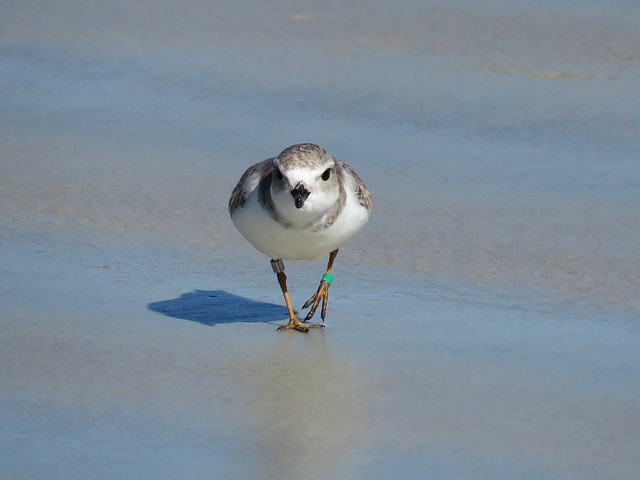
This is another bird from the Great Lakes Piping Plovers population. It hatched in 2014 at Apostle Islands National Lakeshore in Wisconsin.
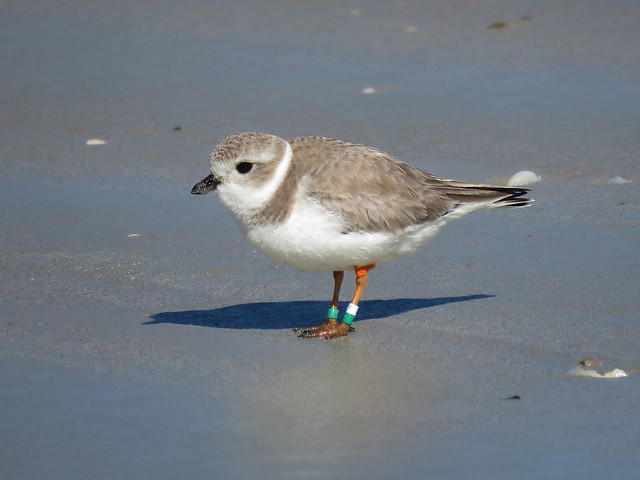
This Piping Plover was hatched in 2009 at Sleeping Bear Dunes National Lakeshore in Michigan. Since 2012 she has been seen nesting in Gulliver, in Michigan’s Upper Peninsula.
I also found and reported six different flagged Red Knots in three separate flocks over a 3-mile stretch of beach.
Red Knot 047 was first captured and banded in September 2009 at Monomoy National Wildlife Refuge in Massachusetts.
Red Knot 038 was first captured and banded in September 2009 at Monomoy NWR.
Red Knot 2A1 was first captured and banded in September 2011 at Monomoy NWR.
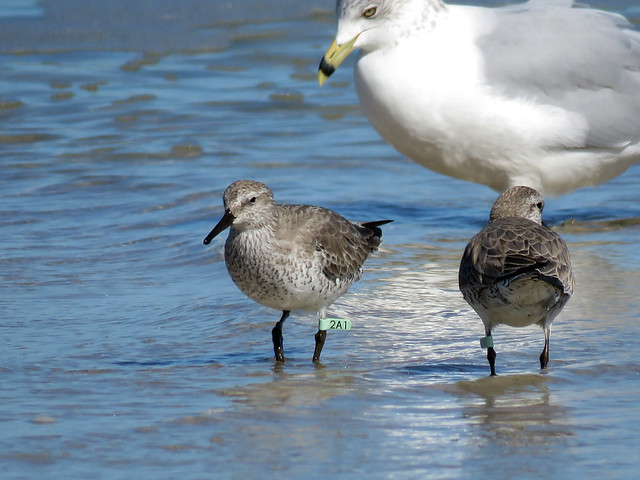
Red Knot AV8 was first captured and banded on August 27, 2007, in New Jersey.
Red Knot TNV was first captured and banded in November 2005 in Avalon, New Jersey. This bird is at least ten years old and has been resighted many times over the years up and down the east coast of the United States.
Red Knot V5M was first captured and banded in March 2011 in South Carolina. I’ve seen V5M before, at the end of 2013 during the Daytona Beach CBC.
Finally, also on January 19, I found another bird I’ve seen before. F05 has returned to Volusia shores once again! Now he’s even more famous — he’s been immortalized by Birdorable! 😉



